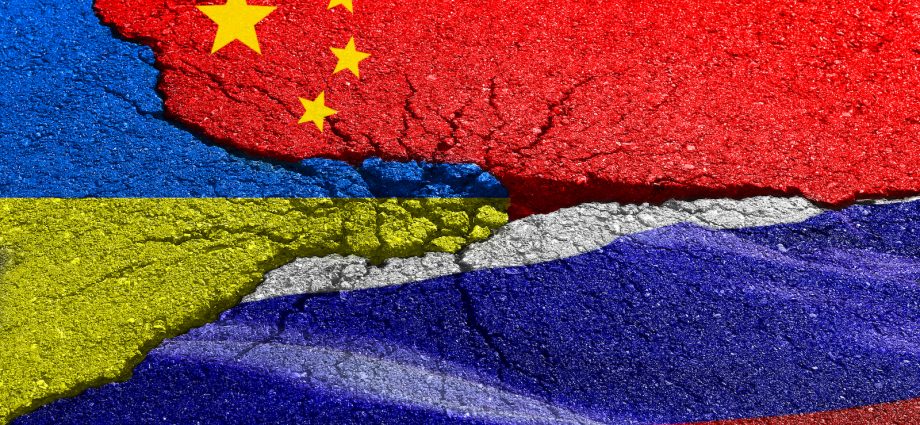
China issued an outline for ending the war between Ukraine and Russia with contradictory offers of advantage for each warring side, harsh criticism for the role played by the United States and praise for its own, self-described pursuit of peace.
Beijing had touted the 12-point outline for peace during a barnstorming visit to Europe by its foreign minister Wang Yi this week. All the contestants in the conflict – Ukraine, Russia and Kyiv’s Western allies led by the United States – pressed their own plans’
The sum of the ideas and responses pointed to a continuation of the war. Ukraine said it will keep resisting Russia’s invasion, Washington said it will support Ukraine without hesitation and Russia asserted it is fighting not Ukrainians but the entire West to safeguard its own existence.
And practically at the same moment China offered the outline for peace talks, it expressed pessimism that anything would come of the plan, and took pains to blame the US and other Western allies of Ukraine.
“The course of the conflict largely depends on the willingness of both sides to resolve the conflict peacefully,” wrote Global Times, a tabloid publication overseen by People’s Daily, China’s official Communist Party newspaper. “The atmosphere and willingness to negotiate are seemingly still far from being mature, given the US and NATO’s interference.
Despite the outlook, China was eager at least to appear as championing countries uninvolved in the conflict but which nonetheless suffer from disruptions in the commerce of wheat and fossil fuels due to the conflict. China demanded that trade must flow freely from the war-torn region.
China tried to offer ambiguous advantages to parties involved, one way or another, in the war. For Ukraine, the sweetener was that “sovereignty, independence and territorial integrity of all countries” must be respected. That demand was the closest Beijing came to saying Russia had invaded Ukraine.
Ukraine quickly highlighted the mention of sovereignty, as a positive though insufficient enticement. Zhanna Leshchynska, the country’s charge d’affaires in China, said she hoped it meant that the Chinese will “also urge Russia to stop the war and withdraw its troops.”
To Moscow’s advantage, Beijing called for a ceasefire, which would ease military pressure on Russia while it is in the middle of an effort to bolster its forces inside Ukraine in advance of trying to mount a big military offensive.
Russian officials “greatly appreciated” China’s diplomatic maneuver, although they filled it out with interpretations that favored numerous Moscow’s war aims.
The Chinese plan “implies the cessation of supplies of Western weapons and mercenaries to Ukraine,” said Maria Zakharova, a Foreign Ministry spokesperson in Moscow.
She added that the plan implied, “the end of hostilities, the return of Ukraine to a neutral non-bloc status, the recognition of new territorial realities that have developed as a result of the realization of the right of peoples to self-determination, demilitarization and denazification of Ukraine, as well as the elimination of all threats emanating from its territory.”
The outline blamed neither Ukraine nor Russia for the war. Instead, China harshly criticized the West in general and the United States in particular for stoking the violence. “The security of a region should not be achieved by strengthening or expanding military blocs,” the diplomatic paper proclaimed – a veiled reference to the West’s apparent desire to eventually invite Ukraine into the North Atlantic Treaty Organization.
China also criticized economic sanctions imposed by the US and its allies on Russia. “Unilateral sanctions and maximum pressure cannot solve the issue; they only create new problems,” the Chinese diplomatic paper said.
The US responded quickly and adversely. President Joe Biden’s Security Advisor Jake Sullivan said the war would end quickly if Russia followed China’s first demand: to show respect for “the sovereignty of all nations.”
“Ukraine wasn’t attacking Russia,” Sullivan argued. “NATO wasn’t attacking Russia. The United States wasn’t attacking Russia. This was a war of choice waged by Putin.”
Wang’s diplomatic itinerary also indicated unserious partiality toward Russia. Although he met with Putin in Moscow, he didn’t bother to visit Kyiv to discuss the proposal with Ukrainian President Volodymyr Zelensky.
In any event, the US had expressed more interest in China’s possible future participation in the war than its peace proposals. Earlier this week, US Secretary of State Anthony Blinken suggested China was preparing to arm Russia in its war and warned weapons supplies from Beijing “would have serious consequences in our relationship.”
“There are various kinds of lethal assistance that they are at least contemplating providing, to include weapons,” Blinken said. An aide to Blinken threw scorn on China’s diplomacy, which he said tried to “have it both ways” by talking peace while taking “concerning” steps to support Russia’s invasion force.
Reports from Washington then said that the Biden Administration is considering the release of intelligence that would reveal China’s arms transfer plans, in hopes the embarrassment would head off any deliveries.
By supplying Putin with arms, China would join Iran as an active ally of Russia – but one with a vastly greater capacity to provide needed weaponry. In essence, two blocs, one headed by the US and one headed by China, would take shape with Ukraine as the arena for a vicious proxy battle.

